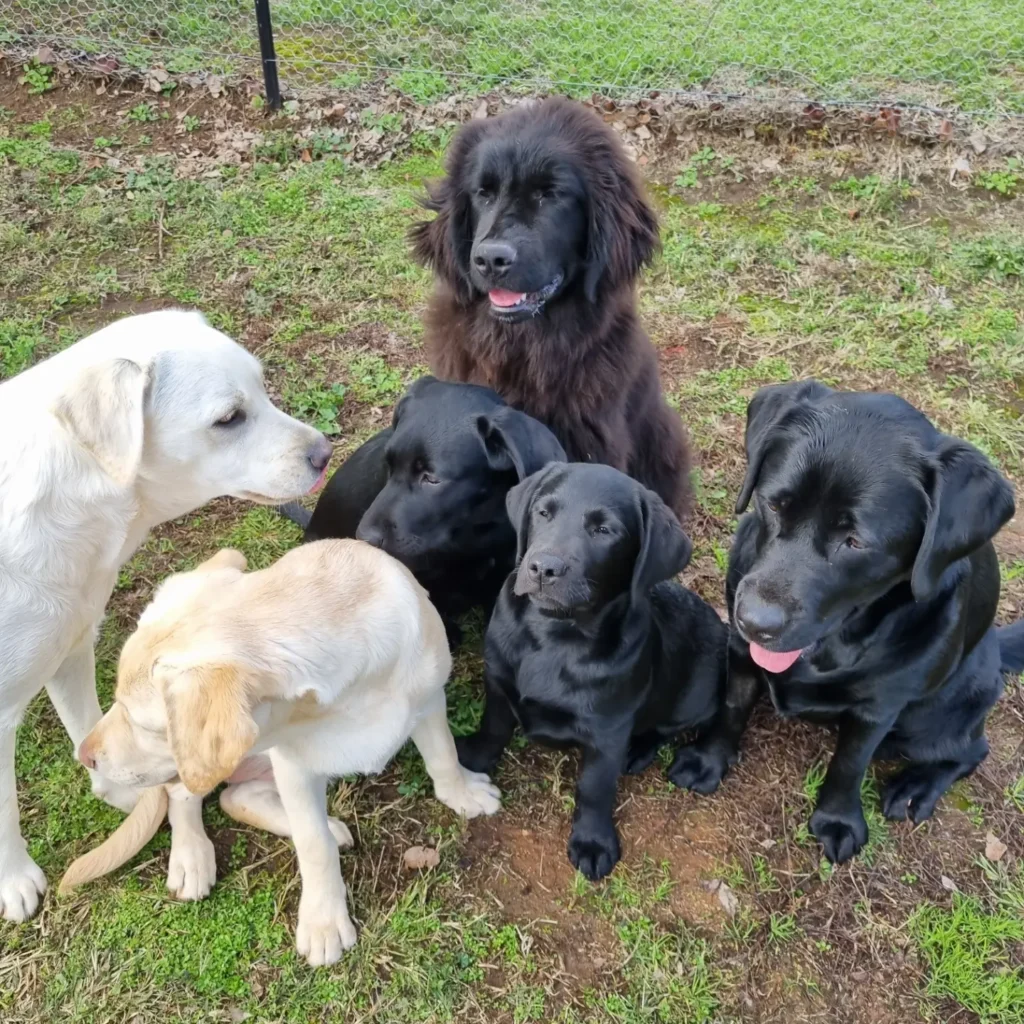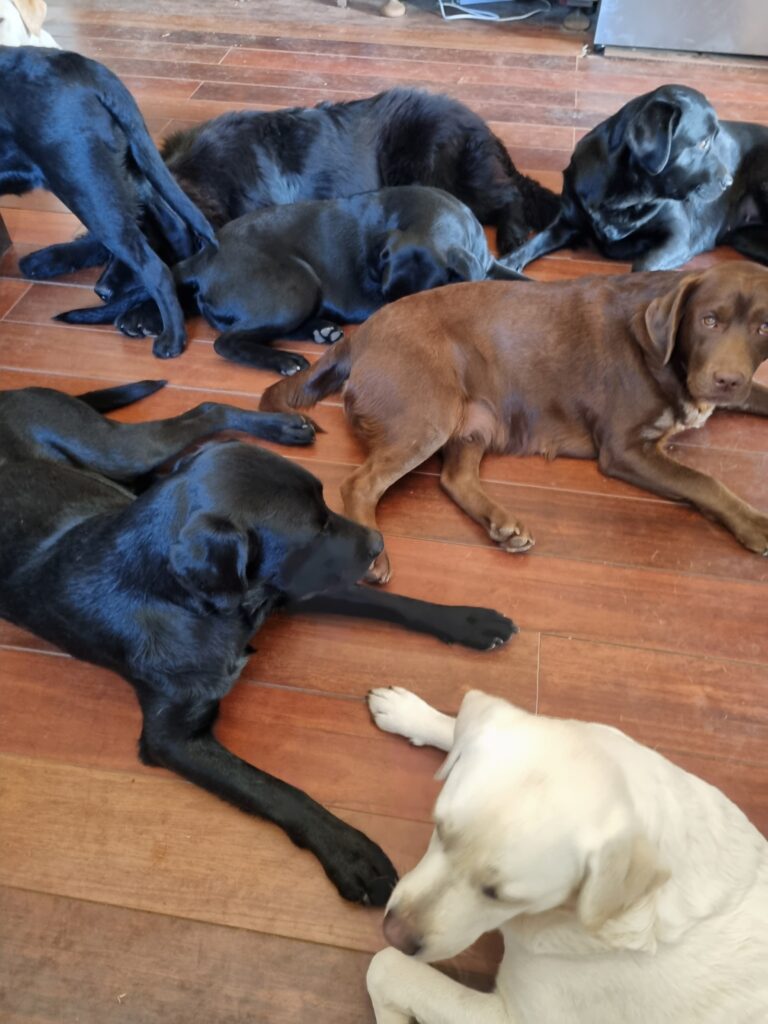Labrador Retriever Feeding Chart By Age

Labrador Feeding Chart and Labrador Weight Chart By Age
Labrador Feeding Chart and Labrador Weight Chart by Age is listed below.
This is a guide only as there are many variances that may change the information listed. Litter size is an important factor, because it determines how much nutrition each puppy is allocated via Mother’s milk. Type of Labrador is also a factor, English Labrador vs American Labrador. Some Labrador Retrievers are long legged and slimmer, others have shorter legs and are a more solid frame.
Once puppy can drink water by themselves the weaning process begins. Our process is, for the most part, left to our Mums to naturally reduce their feeding of the puppies over the next couple of weeks. By the time the puppies are 6-7 weeks old they are not generally looking for Mum’s milk because they are gaining all their requirements from food and water independently.
Palmira Puppies are offered additional food, external to their Mum, from approximately 4 weeks of age. They are given a mush of chicken and rice so that it can be lapped up very easily. The mix is gradually thickened as puppy grows and becomes used to eating. Puppies are offered the mush mix four times a day. Initially, not much is eaten of the mix; however, the smell creates excitement. Building as they become more aware, connecting the smell with the action of eating.
Over Feeding
Throughout the Labrador Retriever’s life, it is important that they are not over fed. Many owners get caught with the “I’m starving eyes”, resulting in their Labrador becoming a round log on legs! Over feeding is detrimental to the lifelong health of Labrador Retrievers and can impact very quickly. Resulting in obesity as well as impacting joints and bones. It is crucial that diet is not supplemented with unhealthy snacks, training treats should be considered in the overall daily intake of food. For the best food for your Labrador Puppy, do your research. There are many differing ideas. Keep your puppy on the diet they are currently on when you first take them home. Gradually change to a diet allowing your puppy to grow in a healthy manner and is conducive to your lifestyle.
Looking after the health of your puppy, gives them the best chance to be fit and vibrant for their life span of approximately 10-12 years. It is important that puppy’s diet is balanced in protein and carbohydrates so that your puppy does not grow too quickly. A puppy that grows too fast puts additional strain on their bones and joints which is a factor in later hip or elbow dysplasia.
Labrador Feeding Chart
Amount of feeding from 24 weeks on, depends on level of exercise or activity and the metabolism of your Labrador. From my experience, most Labradors put on weight easily and with a slight, consistent reduction, can also lose weight easily. A healthy Labrador frame should have an indent at the hips and be able to feel the ribs. The best way to monitor is to look at your Labrador from above. If they are a straight line from shoulder to hip, then work needs to be done to reduce some weight. Speak to your veterinarian for the best dietary advice.
Palmira puppies’ weights are recorded daily up to 5 weeks of age, to ensure that any variances in weight gain are noted immediately. For the last few weeks, they are with us, they are weighed every few days to monitor. This record is given to our new puppy owners, so they are aware of their puppy’s journey from birth.
Health
For an adult Labrador Retriever, a balance of good diet and exercise will support their development through a full life span. Exercise consists of training, playing and going for walks.
Your adult Labrador Retriever should have a dip or indent at the hip. When viewed from above, if they are straight or round from shoulder to hip, diet and exercise will need to be adjusted. Keep in mind that crash diets are not good for canines either, so seek veterinary advice if you are unsure of how to tackle a diet.

